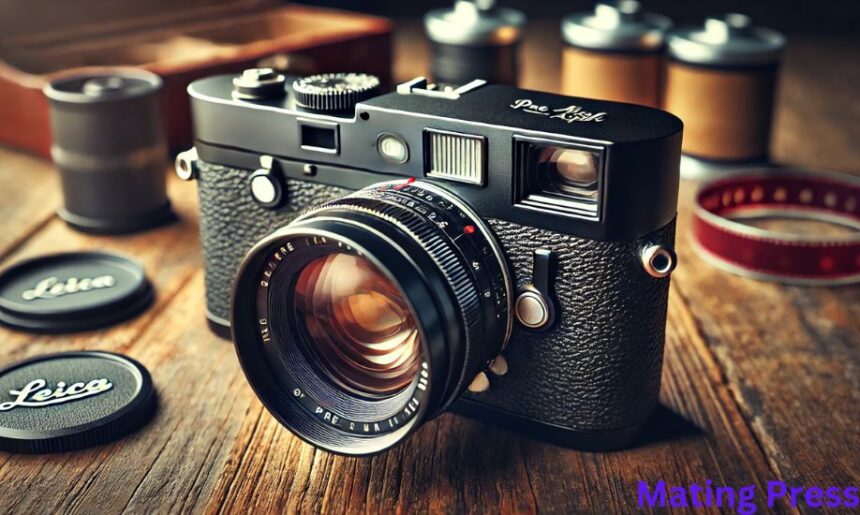The world of photography has been shaped by advancements in technology, and few companies have had as much influence on the development of lenses as Leica. Among the many lenses produced by the company, the Pre ASPH Leica R lenses hold a special place in the hearts of photographers. These lenses, manufactured before the introduction of aspherical (ASPH) lens elements, are known for their distinct optical characteristics and vintage appeal. This article will explore what Pre ASPH Leica R lenses are, how they differ from their ASPH counterparts, and why they continue to be cherished by photographers today. Welcome to an in-depth exploration of Pre ASPH Leica R lenses, a classic era of Leica optics.
What is Pre ASPH Leica R?
Pre ASPH Leica R lenses refer to a category of Leica lenses that were manufactured before the company started using aspherical lens elements. The R designation denotes that these lenses were designed for Leica’s SLR (single-lens reflex) cameras, as opposed to their M rangefinder series. ASPH lenses are designed with special elements that help correct various optical imperfections, such as spherical aberrations, distortions, and chromatic aberrations. Pre ASPH lenses, on the other hand, lack these corrections, giving them a unique optical signature that many photographers appreciate.
The main difference between Pre ASPH and ASPH lenses lies in the sharpness, contrast, and bokeh characteristics. ASPH lenses tend to be sharper and offer better contrast across the frame, especially at wider apertures. Pre ASPH Leica R lenses, however, have a softer rendering with more pronounced bokeh, especially when shot wide open, making them ideal for portraiture and artistic photography.
The Vintage Aesthetic of Pre ASPH Leica R
One of the most appealing aspects of Pre ASPH Leica R lenses is their ability to produce images with a vintage aesthetic. These lenses often have a softer focus when shot at their widest apertures, with gradual falloff toward the edges of the frame. This softness, combined with the unique bokeh that these lenses produce, creates a dreamy, almost “painterly” effect in images. For photographers who value character and artistic expression over clinical sharpness, Pre ASPH Leica R lenses offer a distinct advantage.
Take, for example, the Leica Summilux 50mm f/1.4 Pre ASPH, which is renowned for its soft rendering at f/1.4. When shot wide open, this lens produces a shallow depth of field with smooth transitions between in-focus and out-of-focus areas, creating a pleasing separation between the subject and the background. This characteristic is often referred to as the “Leica glow,” a hallmark of Pre ASPH lenses.
Technical Characteristics of Pre ASPH Leica R Lenses
While the soft rendering and vintage aesthetic are key selling points for Pre ASPH Leica R lenses, these lenses are also known for their robust build quality and precise engineering. Leica is famous for its attention to detail, and this is evident in the mechanical construction of their lenses. Pre ASPH lenses are made with high-quality materials, ensuring durability and longevity. Many photographers today still use Pre ASPH Leica R lenses that are decades old, a testament to the durability of these optical tools.
From a technical perspective, Pre ASPH lenses often exhibit more pronounced vignetting and chromatic aberrations than their ASPH counterparts. While these optical “flaws” might be seen as disadvantages in modern lenses, they contribute to the unique character of Pre ASPH lenses. Many photographers enjoy the challenge of working with these optical imperfections, using them creatively to enhance their images.
Comparing Pre ASPH and ASPH Leica Lenses
The introduction of ASPH lenses marked a significant leap forward in lens design for Leica. By incorporating aspherical elements, Leica was able to produce lenses with improved sharpness, contrast, and overall image quality. ASPH lenses are particularly well-suited for modern high-resolution digital cameras, where pixel-level sharpness is often required.
In contrast, Pre ASPH Leica R lenses are more forgiving and offer a softer look that complements film photography and lower-resolution digital sensors. The choice between Pre ASPH and ASPH lenses often comes down to personal preference and the intended use of the lens. For photographers who prioritize technical perfection and pixel-peeping sharpness, ASPH lenses are the way to go. However, for those who value artistic expression and the unique rendering of vintage optics, Pre ASPH lenses remain a popular choice.
The Appeal of Pre ASPH Leica R Lenses for Film and Digital Photography
While Pre ASPH Leica R lenses were originally designed for use with film cameras, they have found new life in the digital age. Many photographers adapt these lenses for use with modern mirrorless cameras, taking advantage of the unique rendering and optical characteristics that these lenses provide. The softer focus and smooth bokeh of Pre ASPH lenses are particularly well-suited for portraiture and artistic photography, where a more organic, less clinical look is desired.
On modern digital cameras, Pre ASPH lenses can produce stunning results, especially when paired with cameras that have sensors with thinner filter stacks, such as the Leica M10. The combination of classic optical design and modern digital technology allows photographers to create images with a timeless quality, blending the best of both worlds.
Why Photographers Still Choose Pre ASPH Leica R Lenses
Despite the advancements in optical technology, Pre ASPH Leica R lenses continue to be highly sought after by photographers who value their unique rendering and vintage aesthetic. These lenses offer a sense of nostalgia and craftsmanship that is difficult to replicate with modern lenses. For many photographers, using a Pre ASPH Leica R lens is about more than just technical performance; it’s about connecting with the rich history of photography and embracing the imperfections that make each image unique.
Additionally, the market for Pre ASPH lenses has remained strong due to their affordability compared to newer ASPH models. Photographers who are looking for high-quality Leica optics without the premium price tag often turn to Pre ASPH lenses as a more budget-friendly alternative.
Conclusion: The Timeless Appeal of Pre ASPH Leica R Lenses
In a world where technical perfection and razor-sharp images are often prioritized, Pre ASPH Leica R lenses offer a refreshing alternative. These lenses, with their vintage rendering, smooth bokeh, and robust build quality, continue to captivate photographers who value character and artistry in their work. Whether used on film or adapted to modern digital cameras, Pre ASPH Leica R lenses provide a unique photographic experience that is difficult to match.
For photographers who are looking to add a touch of nostalgia to their images, or simply want to explore the rich history of Leica optics, Pre ASPH lenses are a worthy investment. Their timeless appeal and distinctive image quality ensure that they will remain a beloved choice for years to come.
As a photographer working with these classic lenses, you can embrace the imperfections and quirks of Pre ASPH Leica R lenses to create images that are truly one of a kind. Whether you are a collector, a professional photographer, or an enthusiast, the charm of these lenses will undoubtedly leave a lasting impression.
At Mating Press, we celebrate the art of photography, and Pre ASPH Leica R lenses are a shining example of how optical imperfections can be transformed into artistic strengths. Their legacy continues to inspire photographers around the world, and their timeless appeal ensures that they will always have a place in the history of photography.





